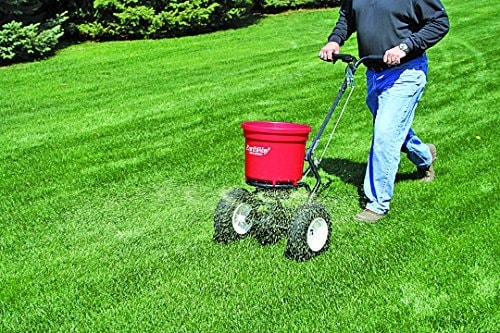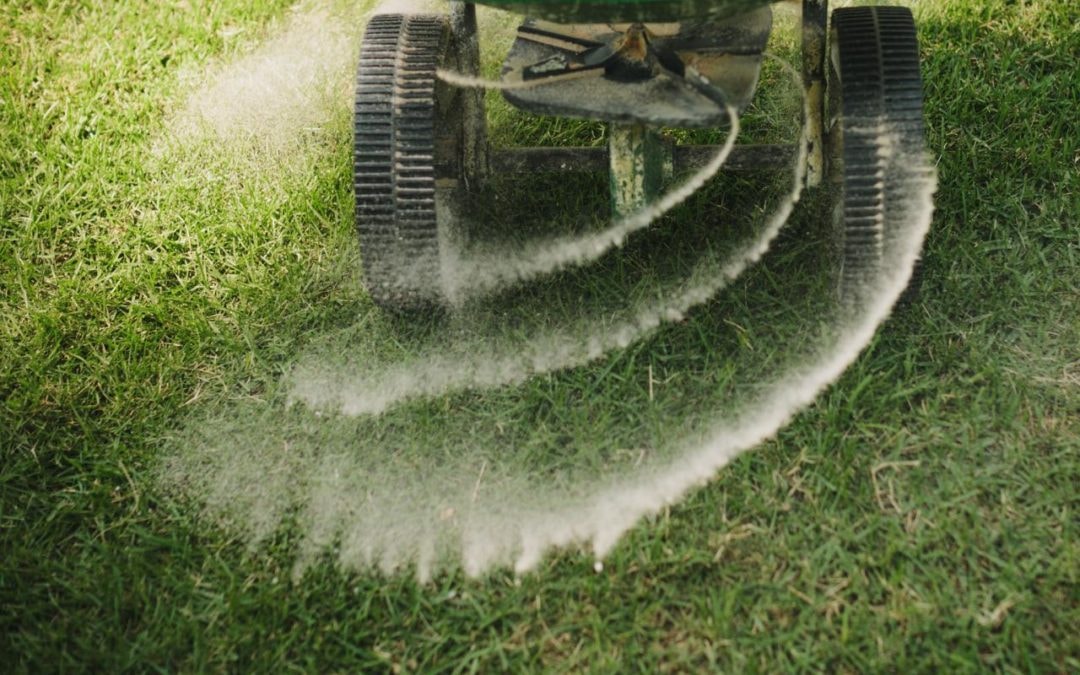Fertilization is key to promoting robust plant growth and maintaining a healthy lawn. Without the right balance of nutrients, plants struggle to thrive, which can lead to poor leaf growth, weak root systems, and unhealthy lawns. In areas like Houston and Humble, Texas, where climate conditions can fluctuate between hot, humid summers and mild winters, a well-planned fertilization program is essential for year-round plant vitality. Proper fertilization ensures that soil nutrients are replenished, promoting lush lawns and vigorous plants.

At ADL Martinez Services, we specialize in providing expert fertilization tips for thriving plants and lawns in Houston and Humble. Whether you’re looking to boost lawn care or improve the overall plant health of your garden, we offer tailored solutions to meet your landscape’s unique needs, ensuring it flourishes regardless of the season.
Understanding Fertilizers: Why Plants Need Them?
Fertilizers play an essential role in plant development by supplying nutrients that might be lacking in the soil. Fertilizers contain a blend of key nutrients, such as nitrogen, phosphorus, and potassium, which are critical for plant growth. These nutrients enhance soil nutrients, ensuring that plants get the right elements to develop strong roots, vibrant leaves, and healthy flowers.

Without the right fertilizer applications, soil can become depleted, leading to poor plant health and a lackluster lawn. Whether you’re growing garden plants or maintaining a lawn, providing the right amount of nutrients is crucial for maintaining a balanced ecosystem. At ADL Martinez Services, we understand the specific nutrient needs of various plants in Houston’s unique climate, ensuring that your plants receive the proper nutrients for optimal health.
The Role of N-P-K in Plant Growth
The three primary nutrients that plants need are nitrogen (N), phosphorus (P), and potassium (K), often referred to as N-P-K. These elements play distinct roles in plant development. Nitrogen fertilizers promote lush leaf growth, encouraging vibrant green foliage. Phosphorus aids in root development and supports flower and fruit production, while potassium fertilizers help plants resist diseases and regulate overall plant processes.
When selecting a fertilizer, it’s essential to consider the fertilizer ratio, which indicates the proportion of N-P-K nutrients in the mix. Choosing the right balance ensures that your plants receive the specific nutrients they need to thrive, whether you’re focusing on growing ornamental plants, vegetables, or maintaining a healthy lawn.
Granular vs. Water-Soluble Fertilizers: Which to Choose?
When it comes to choosing between granular fertilizer and water-soluble fertilizer, it’s important to understand how each works and what suits your gardening needs. Granular fertilizers are solid particles that you can sprinkle around plants or across lawns. They release nutrients slowly over time, making them ideal for a low-maintenance fertilization plan. These slow-release fertilizers provide consistent feeding over several weeks or months, reducing the need for frequent reapplication.

On the other hand, water-soluble fertilizers dissolve in water and provide nutrients that plants can absorb immediately. While they act quickly and show rapid results, especially in nutrient-deficient plants, they need to be applied more often because they wash away easily. For gardeners who prefer a fast, visible boost in plant health, water-soluble fertilizers are a great option, but for long-term nourishment, granular fertilizers offer more consistent results with less effort.
Synthetic vs. Organic Fertilizers: Understanding Your Options
Fertilizers come in two main types: synthetic and organic fertilizers. Synthetic fertilizers are chemically engineered to deliver quick, targeted nutrients to plants. They’re often more concentrated than organic options, providing fast results, but can sometimes lead to issues like nutrient runoff or soil depletion over time if not used properly.

In contrast, organic fertilizers such as compost tea, worm castings, and bone meal are derived from natural materials like plant waste and animal by-products. They enrich the soil with organic matter, improving its structure and long-term fertility. Organic fertilizers release nutrients more slowly, reducing the risk of overfertilization and promoting healthier soil ecosystems. They are also environmentally friendly, making them a sustainable option for gardeners who want to improve soil health while supporting plant growth.
Soil Testing: The Foundation of Proper Fertilization
Before applying any fertilizer, conducting a soil test is essential to understand your soil’s nutrient levels. Soil testing helps determine which nutrients are lacking and whether your soil is too acidic or alkaline. Without a proper soil test, you might risk using too much or too little fertilizer, leading to nutrient imbalances or even plant damage.

The soil test results will guide your fertilizer recommendations, ensuring that you provide your plants with exactly what they need for healthy growth. By targeting specific deficiencies, you can avoid common problems like overfertilization and nutrient runoff, keeping your lawn and garden plants in peak condition year-round.
Signs of Too Much Fertilizer: How to Avoid Fertilizer Burn
Applying too much fertilizer can be detrimental to your plants. When over-applied, fertilizers can cause fertilizer burn, which results in scorched or yellowing leaves, stunted growth, and sometimes plant death. Excess nutrients can accumulate in the soil, damaging root systems and hindering water uptake. In severe cases, the runoff from excess fertilizer can contaminate nearby water sources, leading to environmental harm. To avoid plant damage, always follow the recommended dosage on the fertilizer package and perform a soil test to ensure you’re only giving your plants what they truly need.
Fertilizing for Specific Plants: What Different Plants Need
Different plants have varying fertilization requirements. Garden plants, such as vegetables and annual flowers, often thrive on balanced fertilizers that provide equal amounts of nitrogen, phosphorus, and potassium. Trees and shrubs, on the other hand, usually require more phosphorus to support strong root development.
Container plants may need more frequent fertilization because nutrients in their limited soil volume deplete faster. When selecting fertilizers, it’s important to consider the fertilizer ratio to match the specific needs of each plant type. Tailoring your fertilization plan ensures that all your plants, from blooming shrubs to leafy garden vegetables, receive the correct nutrients at the right time.
Fertilizing Lawns: Achieving a Healthy, Lush Lawn
Maintaining a healthy lawn requires proper fertilization tailored to the type of grass you’re growing. Cool-season grasses, which thrive in cooler temperatures, benefit from fertilizers high in nitrogen, especially during the early spring and fall. Meanwhile, warm-season grasses, commonly found in Houston and Humble, TX, should be fertilized in late spring or early summer when they are actively growing.

The key to a lush lawn is selecting the right lawn fertilizers with an appropriate fertilizer ratio, balancing nitrogen, phosphorus, and potassium. It’s also essential to take into account the local climate, as overfertilizing during hot weather can cause lawn stress and harm the grass. ADL Martinez Services offers professional guidance to keep your lawn thriving in all seasons.
Best Practices for Spring Fertilization
Spring fertilization is vital for jump-starting plant growth after the dormant winter months. As plants prepare for a new growing season, they need an extra boost of nutrients. Applying a balanced fertilizer in early spring helps replenish the soil and encourages robust development of roots, leaves, and flowers.
To get the most out of your fertilizer applications, choose a fertilizer tailored to your specific plants and local climate conditions. Timing is crucial—apply fertilizer in early spring when temperatures are mild, avoiding hot days to prevent plant stress. This ensures strong and steady growth throughout the season.
Fertilizing in Hot Weather: Challenges and Solutions
Fertilizing in hot weather can be tricky because high temperatures can stress plants and lead to nutrient loss through evaporation. To avoid issues like fertilizer burn, it’s best to use slow-release fertilizers, which gradually feed your plants without overwhelming them. These fertilizers allow plants to absorb nutrients over time, supporting healthy leafy growth even in the heat.
Proper watering is also essential—fertilize in the early morning or late evening when temperatures are cooler, and follow up with proper watering to help nutrients penetrate the soil and reach the roots. This reduces the risk of burning your plants’ leaves and ensures they stay hydrated during hot weather.
Seasonal Fertilization Tips for Year-Round Lawn Care
A solid fertilization plan changes with the seasons to keep your lawn healthy throughout the year. In early spring, apply a balanced fertilizer to boost growth as plants come out of dormancy. During early summer, switch to a nitrogen-rich fertilizer to promote robust green growth. For fall fertilization, focus on fertilizers that help strengthen roots and prepare your lawn for winter dormancy.
By following these seasonal fertilization tips, you can maintain a vibrant, healthy lawn regardless of the time of year.
Organic Fertilization for Sustainable Gardening
Using organic fertilizers is an excellent choice for promoting long-term sustainable gardening. Organic fertilizers, like bone meal and compost tea, are derived from natural sources and improve soil health by adding organic ingredients that enhance its structure and water retention. These fertilizers release nutrients slowly, reducing the risk of overfertilization and ensuring steady nutrient uptake by plants.

Organic fertilizers are also better for the environment, minimizing the impact on local ecosystems and reducing chemical runoff. For gardeners looking to cultivate a healthier garden while supporting the environment, organic fertilization is the ideal solution.
Common Fertilization Mistakes and How to Avoid Them?
Several common fertilization mistakes can harm your plants. One is using too much nitrogen, which can cause excessive leafy growth at the expense of flowers and roots. This also increases the risk of fertilizer burn. Another mistake is skipping soil tests—without knowing your soil test results, you may apply unnecessary nutrients or overlook deficiencies. Lastly, applying fertilizer at the wrong time can stress plants, especially during extreme heat or cold.
To avoid these mistakes, always conduct a soil test before fertilizing, follow recommended fertilizer application rates, and time your applications based on the specific needs of your plants and local climate.
Fertilization for Thriving Plants and Lawns with ADL Martinez Services
Proper fertilization is the cornerstone of maintaining a healthy lawn and thriving plants. By using the right nutrients, adjusting for seasonal needs, and avoiding common mistakes, you can create a vibrant landscape that flourishes year-round. Whether you’re dealing with garden plants, trees, shrubs, or your lawn, following these fertilization tips for thriving plants and lawns and lawn care practices is key to long-term success.
For expert guidance tailored to the Houston and Humble areas, trust ADL Martinez Services. We specialize in enhancing plant health and ensuring that your landscape looks its best throughout every season. Contact us today for personalized fertilization plans, lawn care practices, and all your landscaping needs.
